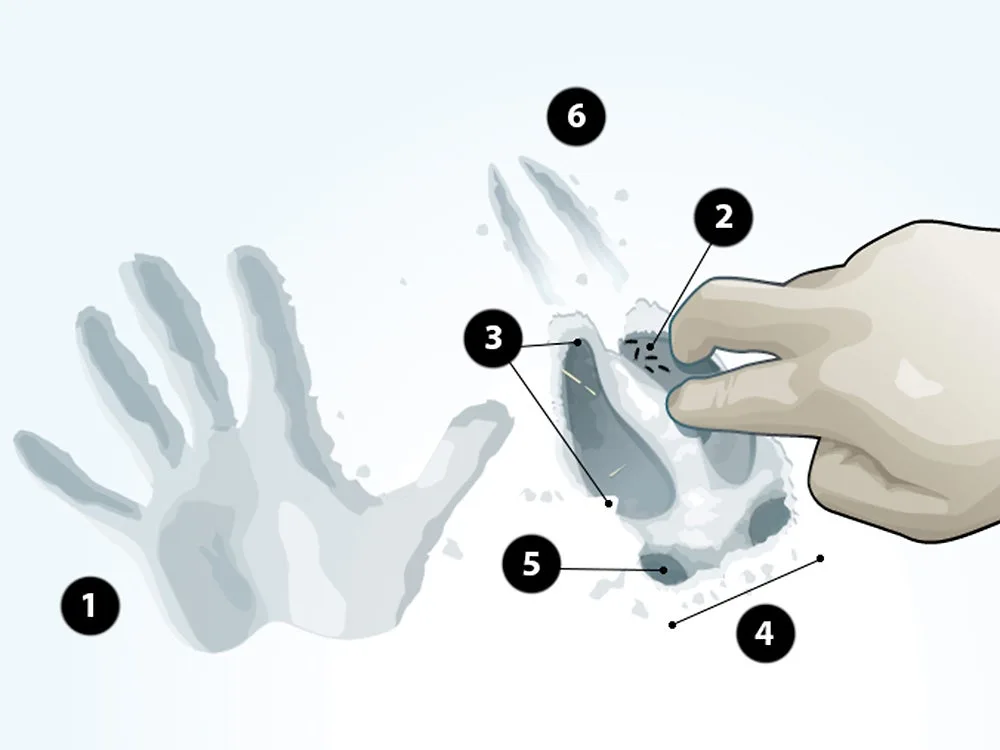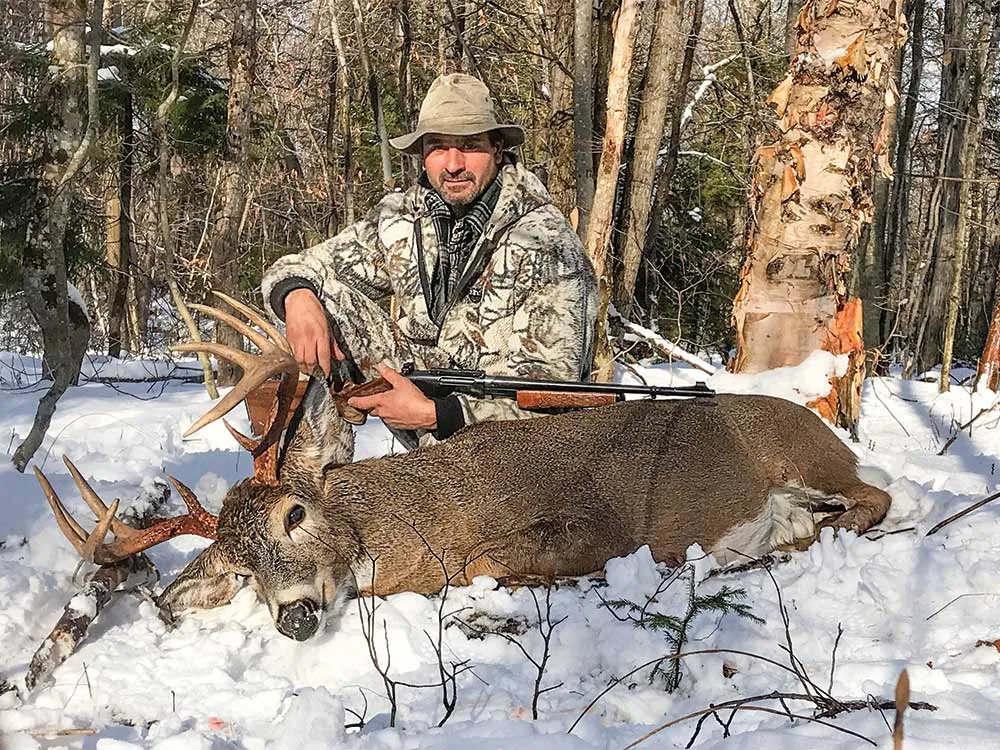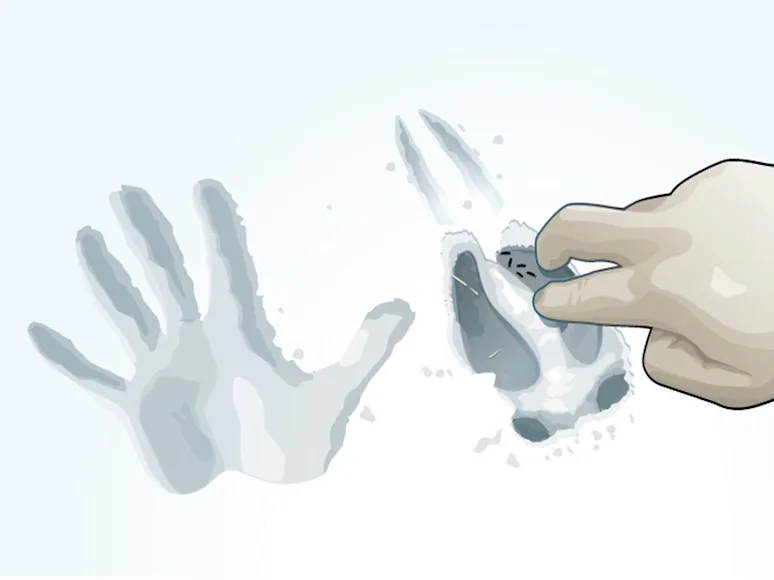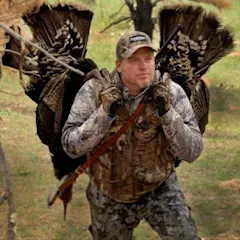For most of us, whitetail deer hunting is a sit-and-wait game. Whether that sitting is done in a tree stand or a ground blind, the strategy is the same: Pattern the deer, place your stand, set your alarm, harvest your buck. And that’s fine. But haven’t you always wanted to track a deer in the snow like those big-woods hunters in Maine and Montana?There's no reason you can't do it, as long as you've got some snow and decent amount of ground to roam. Oh and there's one more thing you'll need: a brand new set of skills.
If you want to follow a buck track to its maker, you'll need to learn how to read deer tracks in the snow—how fresh they are, whether they really belong to a buck and what they reveal about where the deer might be and how you can get the drop on him. It's all written in the snow, if you can read the clues. So, here's how.
4 Clues for How to Read a Deer Track in the Snow
When you find what look like fresh deer tracks in the snow, the first thing you want to do is focus on an individual hoofprint for some specific clues. Here's what look for.

Make a palm print in the snow beside the track and press its edges. Now, press the edges and midline of the hoof print. If the track is hot, the snow will give way just as easily.
Debris inside the hoof print, such as springtail snow fleas or windblown snow, is a sign of an older track.
Look for traits in the print, such as a longer toe or a chipped hoof, to help you stay on the tracks of a specific deer.
The width of the hoofprint can tell you more about the size of the deer than the length of the toes. If at its widest point the print's width measure 3 inches or more, that’s a deer worth following.
When dewclaws register in the track, it's a sign of a heavy deer. It doesn't guarantee that the prints were made by a buck, but it ups the odds.
The same is true of drag marks between the tracks. Bucks tend to drag their feet when walking, while does tend to pick theirs up daintily. In light snow, drag marks can hint at a buck. That said, in snow more than a few inches deep, does may leave drag marks too.
2 Keys for Reading Sets of Deer Tracks
Now, stand back a bit so you can see several tracks all in a line, and look for the these key patterns.

Stride: The length between tracks, or stride, of the average walking whitetail typically measures less than 18 inches. That of a good buck may go nearly 2 feet.
Stagger: A barrel-chested buck's stagger—the width between the left and right tracks—is greater too. Tracks of a doe or young buck run almost in a straight line, but the stagger of a good buck's track can measure 6 to 8 inches.
Other Clues When Reading Deer Tracks in Snow

As you walk a set of tracks, there are other clues you can look for. Offset tracks, for example, can hint at a buck. In many sets of tracks, what looks like one track is actually two, as a deer's back hoof on either side falls in the same print as the front. But with a heavy, wide-chested buck, the back hoof will often be offset, falling inside the front hoof and just behind. Multiple sets of different-size tracks usually hints at a doe family group, whereas a lone set of large tracks is more likely a buck. A urine pattern in the tracks can tip you off too. When does pee, they stop and squat, leaving their mark behind two splayed rear hoofprints. Buck's either shoot a yellow hole in the snow in front of the rear prints or they whiz on the move, leaving a dribbling line of pee and, if you very lucky, a long sprinkling or large pellets to boot.
Judging from the tracks alone, it's nearly impossible to tell the difference between a big doe and a small or even medium-size buck. But when you take all the clues together in aggregate, you can make a very solid guess. Or you can follow the advice of well-known Adirondack tracker Joe DiNitto, who says "If I look down and I don’t say 'Holy sh*t!' then I do not follow that track." So, review the advice above to learn how to read deer tracks, and when you do find a track that makes you say "Holy sh*t!" you can be confident it was made by a buck worth catching up to.







